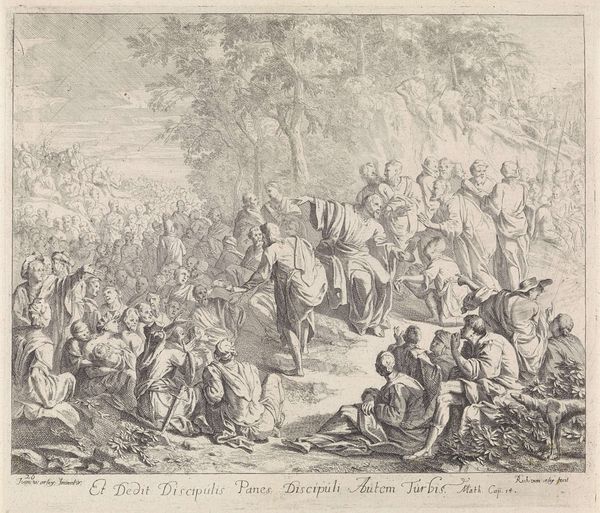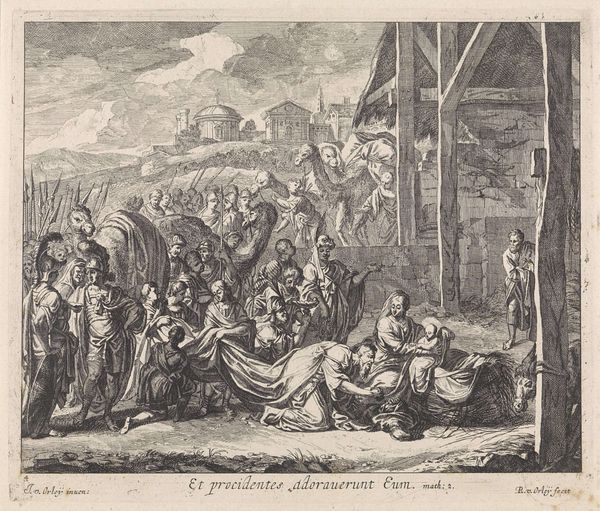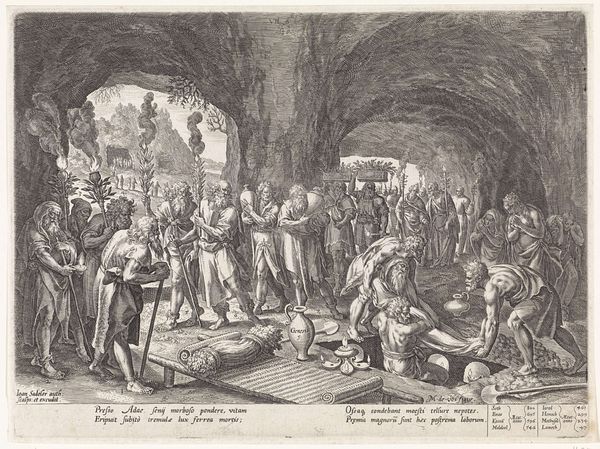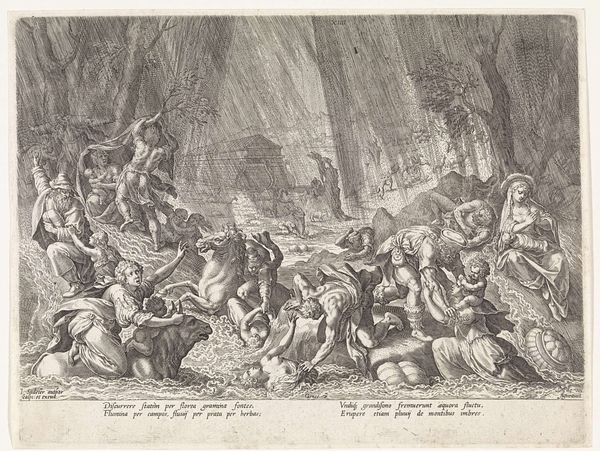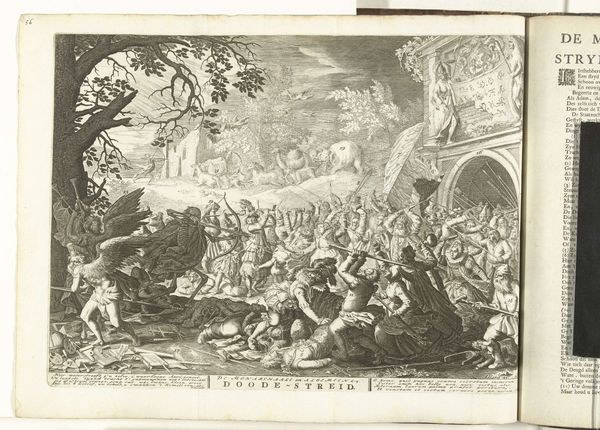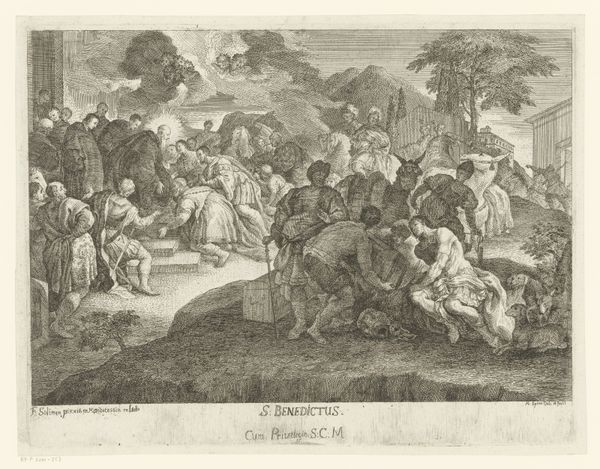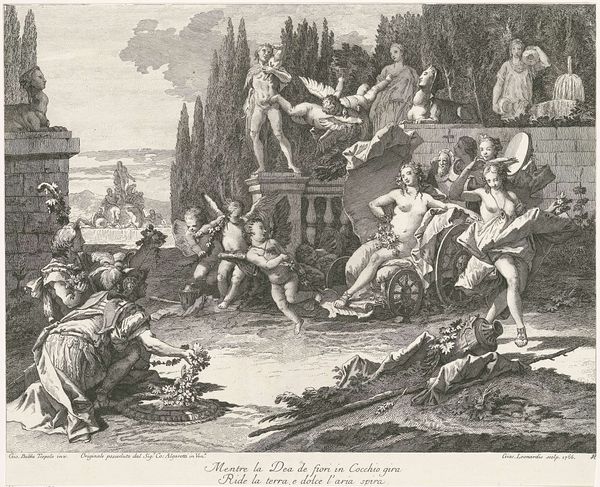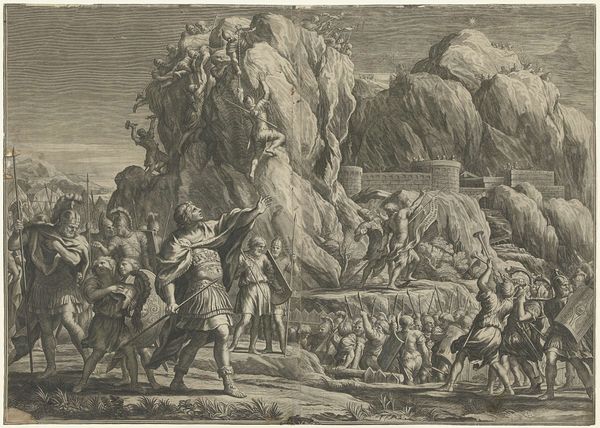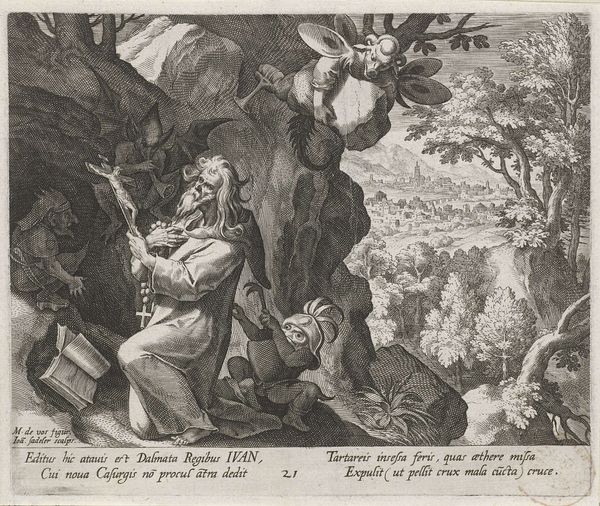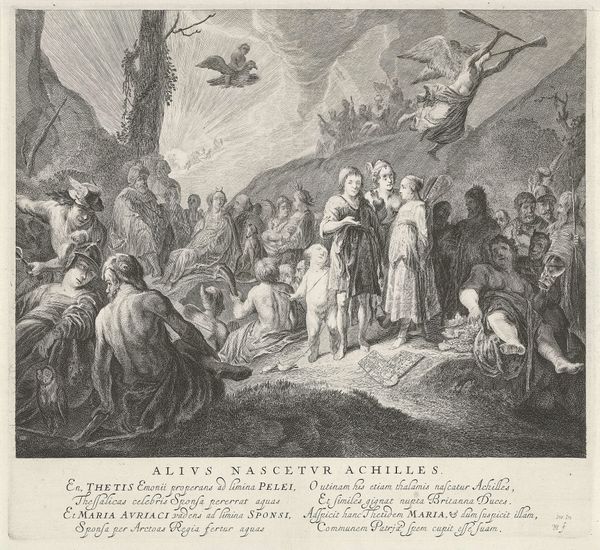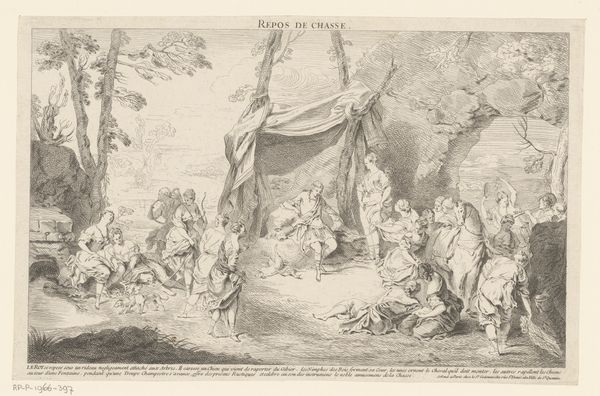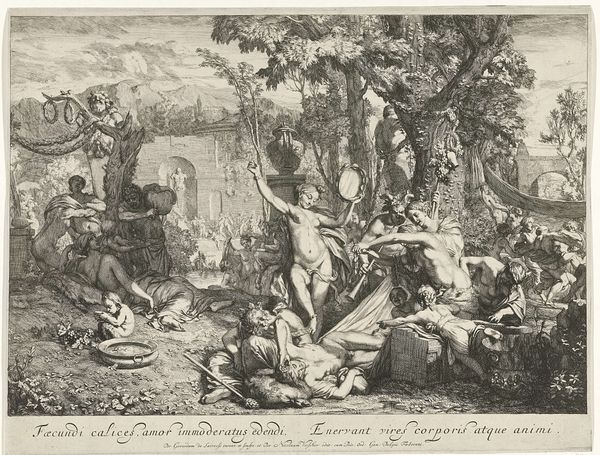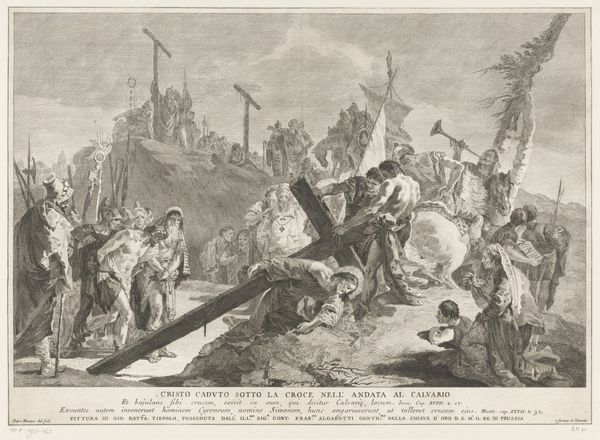
#
light pencil work
#
ink drawing
#
pen drawing
#
pen sketch
#
pencil sketch
#
personal sketchbook
#
ink drawing experimentation
#
pen-ink sketch
#
pen work
#
sketchbook drawing
Dimensions: height 208 mm, width 258 mm
Copyright: Rijks Museum: Open Domain
Curator: Here we have a work entitled “Opwekking van Lazarus,” which translates to “The Raising of Lazarus,” created before 1700 by Richard van Orley. Editor: My initial impression is that it’s a flurry of line work creating a dramatic, almost theatrical scene. The textures seem very varied for what I imagine is an ink drawing. Curator: Indeed. Van Orley, working within the Baroque tradition, situates this miraculous event—Lazarus being raised from the dead by Jesus—within a society deeply structured by religious beliefs. Lazarus becomes symbolic, not just of divine power, but of the potential for societal transformation and perhaps the promise of salvation from the oppressive structures of the time. Editor: Looking closer, there is definitely an emphasis on contrast, which contributes to this feeling of high drama. Notice how the artist employs denser hatching in the shadowed areas to build mass. Then look how, in the areas where light touches the figures, there's much more space in the mark-making creating this visual vibration, or aura. Curator: It’s crucial to note how gender dynamics also play a role. The narrative often overlooks the role of Lazarus’s sisters, Mary and Martha. These women, central to the story, represent devotion and faith, challenging the patriarchal norms of their era, acting almost as an undercurrent of resistance to expected roles and behaviors within a deeply religious social fabric. Their grief and subsequent joy underscore the emotional intensity of the scene, providing a counternarrative to the traditionally male-dominated religious interpretations. Editor: From a formal standpoint, observe how Van Orley cleverly divides the composition into distinct planes. The figures on the right act almost as a choir witnessing and celebrating a miracle. And on the left, figures seem to emerge from the darkness. All of which serves to focus our eye directly on Lazarus emerging. Curator: I appreciate how you connected the structure back to content there! Ultimately, the work encapsulates how marginalized individuals or communities could find agency through the reinterpretation—or witnessing—of biblical events that resonated with their lived experiences of oppression and hope for change. Editor: A fine point. Seeing this drama has given me an intriguing new view into historical artistic practices of that time.
Comments
No comments
Be the first to comment and join the conversation on the ultimate creative platform.
